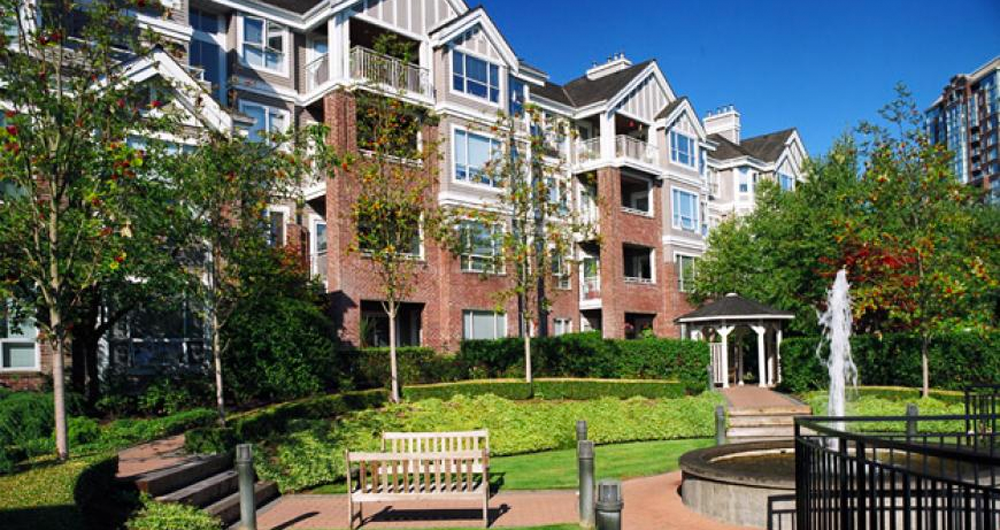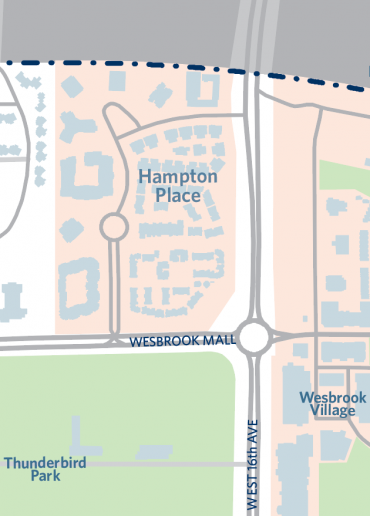
UBC's First Neighbourhood
Hampton Place, UBC’s first neighbourhood, marks a shift that happened in the 1980s towards creating a full-fledged town on campus. This vision came into being with Robert H. Lee, who believed that UBC should take an active role in developing a portion of its 1,000 acres of land for residential development and establish long-term endowment wealth. With the approval of the UBC Board of Governors, UBC Properties Trust was formed and the land on which Hampton Place sits was designated to become a residential neighbourhood.
Hampton Place was established before UBC’s Land Use Plan (formerly the Official Community Plan (OCP)) and as such, does not have a Neighbourhood Plan.
Hampton Place, which consists of 100% market-leasehold housing, raised $81 million in net gain for the university. Due to its success, the UBC Board of Governors decided in 1994 that an additional 200 acres of campus land be transformed into neighbourhoods with a mix of housing, parks, shops and amenities. Areas designated as neighbourhood land are outlined in UBC’s Land Use Plan.
Hampton Place Timeline
1984
Robert H. Lee appointed to the Board of Governors
Influenced UBC to begin residential development
1984
Land for Hampton Place designated for residential development
And UBC Properties Trust formed
1989
Pacific Spirit Regional Park established
Designated land part of as Metro Vancouver
1989
Hampton Place completed
All buildings in the neighbourhood completed
1994
200 acres of UBC land allocated for neighbourhood development
Allocated from UBC's 1000 acres by the Board of Governors
2001
Chancellor Place and Hampton Place Neighbourhood Plans adopted
Introduced new types of housing to UBC, including rental units
